#marshal marmont
Text

The 88th Foot at the Battle of Salamanca, 1812
by Christopher Clark
#battle of salamanca#art#christopher clark#watercolour#napoleonic wars#peninsular war#europe#european#history#british#english#portuguese#spanish#french#duke of wellington#marshal marmont#salamanca#spain#iberia#napoleonic#auguste de marmont#arthur wellesley#great britain#britain#england#portugal#france#french empire#empire#war
61 notes
·
View notes
Text
Happy birthday Marshal Marmont!
July 20, 1774

#marshal marmont#happy birthday#auguste frederic louis viesse de marmont#napoleonic marshals#portrait by andrea appiani
33 notes
·
View notes
Text


Marechal Marmont
#marshal marmont#napoleonic wars#napoleonic era#napoleon's marshals#history#auguste marmont#bonapartism
7 notes
·
View notes
Text


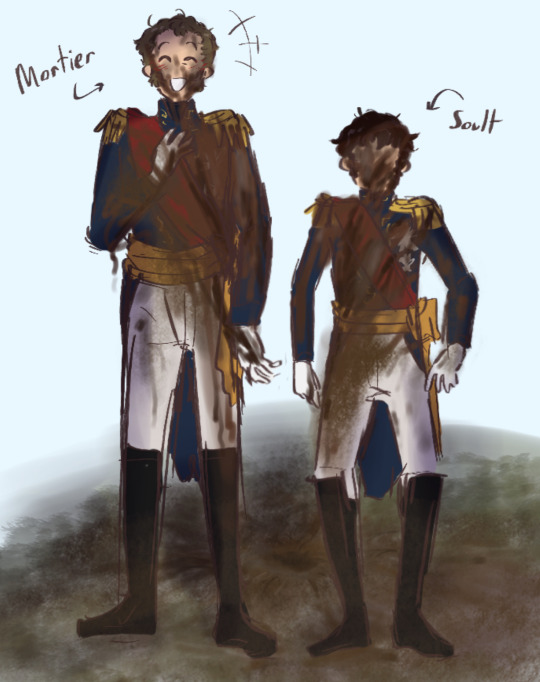


I think I’m having a napoleonic styled doodle fever. I can’t stop drawing marshals. The drawing brainrot has finally begun.
#napoleonic wars#napoleonic era#napoleon’s marshals#joachim murat#michel ney#jean lannes#auguste frederic marmont#jean de dieu soult#edouard mortier#need to stop gatekeeping 😭#one was from a month ago#my art
88 notes
·
View notes
Text
I'm bored, here's Marmont
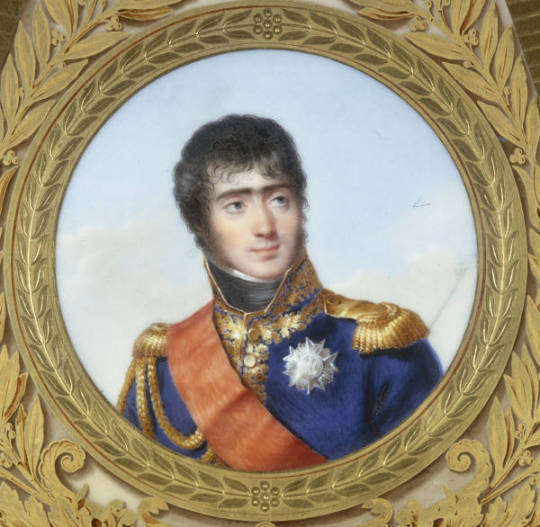
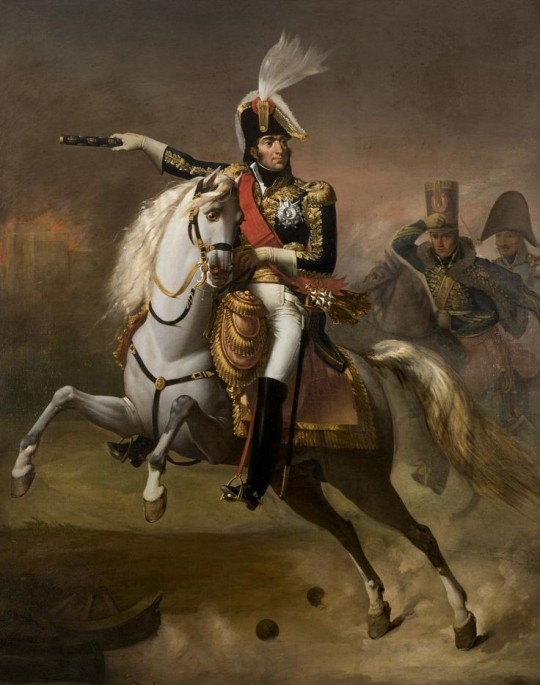
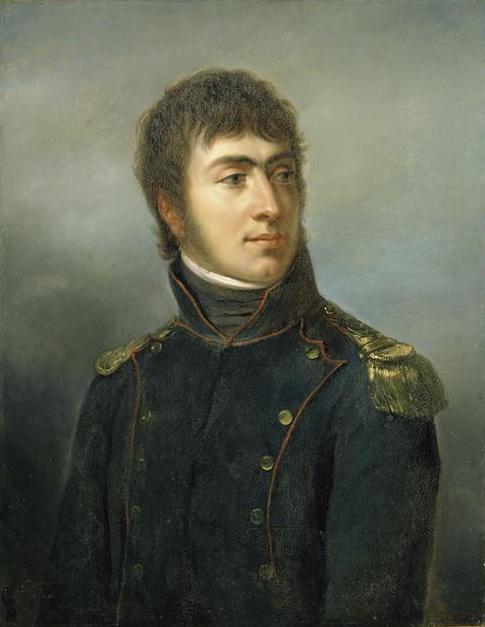
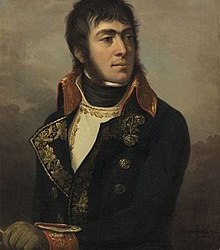


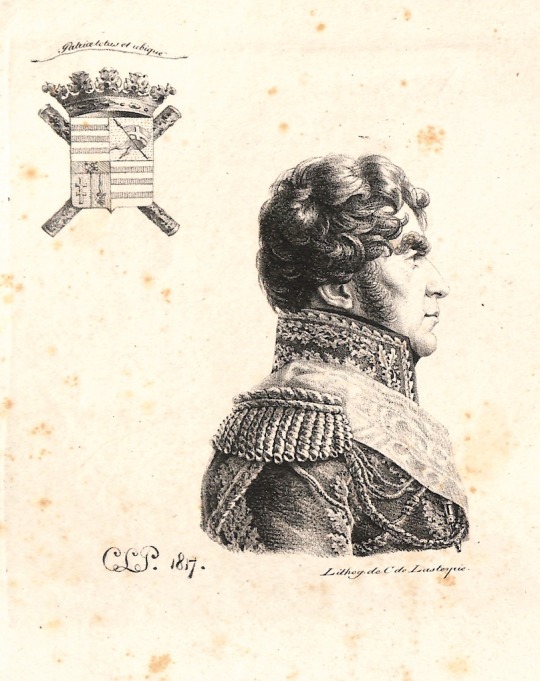

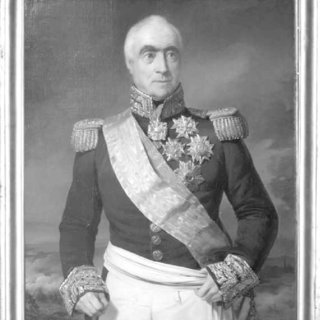
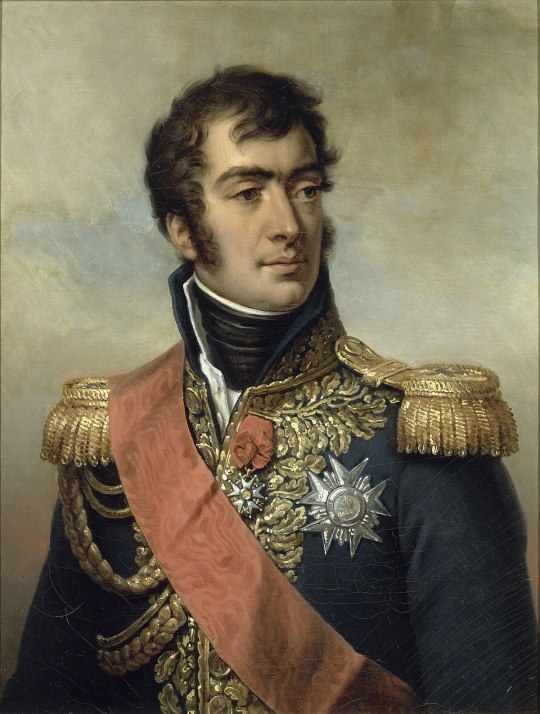
All images have been pulled randomly from the internet
Ps. I'm amplifying my love for this guy for the memes 💀
#napoleon#auguste de marmont#marmont#napoleonic wars#napoleonic era#aguste marmont#auguste marmont#im losing my damn mind#its so funny#he has caterpillar eyebrows#cute in a ugly way#like a pug dog#napoleons army#napoleons marshals#the duke of ragusa#why he kinda cute in the first pic?
36 notes
·
View notes
Text
"… he was known as King Marmont"
After the Empire had ended, Charles d’Agoult, now in his mid-twenties, held the rank of colonel – and was left crippled by a serious leg wound he had received during the batlles of the final campaign in 1814. (Ironically, this may have been the only time he actually fought directly under Napoleon’s superior command.) His crippled leg preventing him from most active service, he did remain in the army but now was charged mostly with minor administrative tasks. At some point, he also served under Marshal Marmont, for whom he has much praise in his memoirs.
The Duke of Ragusa was certainly the most maligned man of this century. After the disasters of 1814, a victim was needed. The Jacobins and Bonapartists would not admit to having been defeated. They preferred to cry out that they had been betrayed.
It’s pretty obvious that d’Agoult, an ardent royalist (of the older Bourbon branch at least) would take a friendlier stance towards Marmont, whose actions to some degree had helped to put Louis XVIII on the throne. But that does not render the point he makes above invalid. Marmont’s actions on April 5 (whatever they really were) surely did not have a huge impact anymore. Napoleon had lost the war fair and square, had kept loosing it ever since 1812.
The truth is that Marmont, entrusted with the difficult mission of defending Paris alongside Mortier, abandoned by the ministers and by King Joseph, was the last and most intrepid defender of this great city. We saw him in the streets of Belleville, surrounded by a few foot soldiers, sword in hand, his uniform torn, fighting like a sous-lieutenant and encouraging the soldiers. It was only during the night that he returned home, exhausted with fatigue and hunger.
And for once I feel like I need to defend Joseph: When he ordered the government to leave the capital, he only followed the instructions he had received from Napoleon.
Of all the marshals, Marmont was certainly the most educated and intelligent. The Emperor loved to chat with him. His bravery appealed to the troops. There was grandeur in his ideas and in his manners. In the army, he was known as King Marmont.
While Charles d’Agoult apparently sees this royal bearing as a positive character trait, I highly doubt that in a French army with a mostly republican and anti-royal attitude the nickname "King" was meant in a friendly manner.
He had a mamelouk, superb mules with silver rings and bells, and while others grew rich through shameful embezzlement, he spent his fortune nobly.
This is a highly interesting attitude that imo also says a lot about why the d’Agoults were constantly in debt: Spending money, if you have it or not, is admirable and a true sign of nobility. - As to Marmont’s fortune, it was actually more that of his wife and father-in-law, but that was probably all the same to d’Agoult. As far as the embezzlements are concerned … well, at least Eugène de Beauharnais seems to have had a different opinion at times.
A skilled artillery officer, it was he who came up with the idea of placing the cannons in the hollowed-out fir trees at the Saint-Bernard pass. For a long time, there were guns a la Marmont in the artillery.
The misfortune of this illustrious marshal was that his vivid imagination lacked measure and prudence. He threw himself, so to speak, on an idea, on a speculation. Having been one of the first to guess the considerable role beet would play in industry, he set about spending extravagantly on his beautiful land at Chatillons-sur-Seine, building sugar mills and refineries, not to mention forges and a magnificent stud farm…
Not quite sure how the horses would help with the beet but okay. It’s also this unmeasured imagination that Charles sees at the root of Marmont’s act of disloyalty in 1814.
15 notes
·
View notes
Text
Happy Birthday, Marshal Marmont!
Considering the length of this post, I guess I’m making up somewhat for all the other Marshals whose birthday I neglected in the past few months. I’m also interested in this Marshal because he has become such a cardboard cutout in the popular imagination, and nobody on Earth is a cardboard cutout; this characterization only makes me more curious about what he was actually like.
A biography of Marmont, in French, was published just a year or two ago. Reading its first pages from the Amazon site ( https://www.amazon.ca/MARMONT-Franck-Favier/dp/2262068054/ref=sr_1_2?crid=2XGX0RQWO1G9P&keywords=marmont&qid=1658303682&s=books&sprefix=marmont%2Cstripbooks%2C127&sr=1-2&asin=B07DGNKW98&revisionId=&format=2&depth=1 ), I found out how carefully educated he was, the one surviving child of well-to-do, happily married, doting parents.
As I’m always interested in links between prominent people of the period, I was happy to discover that he knew an already turbulent Junot from adolescence; that he met Napoleon as early as 1791, and Duroc in 1792; and that in 1793, he was serving under Kellermann, the oldest future Marshal and he, Marmont, the youngest. Their difference in age was forty years.
About Kellermann, Marmont wrote this to his mother: that Kellermann was an old military commander who had previously fought in 16 campaigns, and who took advice from nobody; but who did seek Marmont’s opinion at times, and who adopted it. Did Kellermann do so? I don’t know, but Marmont’s education was excellent, as previously noted, and whatever one might think about him he was one sharp tack.
Finally, this is some of what old curmudgeon McDonnell wrote about Marmont's time in Dalmatia: "His activity was prodigious. He set up a new constitution for the ancient city of Ragusa, conducted negotiations with Turkey and Montenegro, created the Dalmatian Legion, appointed new judges, reorganized the finances of both his army and of the country, established large depôts in various towns in order to enable him to march independently of lines of communication, drew up plans for an invasion of Turkey, decentralized the military hospitals, built fortifications, bridges, dykes, among the marsh-lands and cutting through the rocks, and during his governorship visited every village and hamlet in all Dalmatia, and knew every hill and mountain by its name." I wish I had this kind of energy.
31 notes
·
View notes
Photo
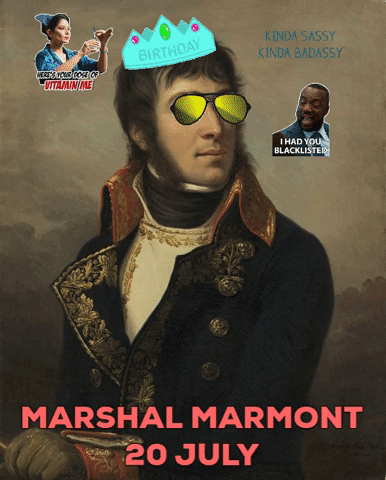
Happy Birthday, Marshal Marmont! (via GIPHY)
12 notes
·
View notes
Text
Let's Judge The Signatures Of Dead Frenchmen - Marshals of the Empire Edition
plus some bonuses at the bottom
This is a shitpost I've just wanted to do ever since I noticed Masséna's signature.

I know signatures are not meant to be legible, god knows mine isn't, but look at it, it's all the same letter!
I'm lazy so I'm only going to judge the ones on wikimedia and a few extra from letters, sorry to Marmont and others who did not get their signatures scanned and then made transparent for osme reason who is going to forge a dead frenchman's signature
Of course Bessières has a nice one:

Berthier is also pretty nice:

Loopy! Wait as has been pointed out to me, that could be an Alex. Did anyone ever call him Alex or Al
I love Lannes' because he circles his name!

A fancy guy like Murat's gotta have a fancy one, right?

Nice but not as loopy as Berthier's, honestly not the fanciest here
Davout has a nice legible one

Let's look at Soult's-

Woah, he's taking up a bit of space there! Where are you going with that t, champ?
Augereau is nice and straight I'm in awe as someone physicalyl incapable of writing in a straight line even on lined paper

Mortier is also really nice!

but also Ed Mortier. He called himself Ed. Do you think his friends also called him Ed or perhaps Eddie
MacDonald is Massena tier

can you guess who this next one is

hint: not french
Lefebvre's goin for the loop:

Jourdan is all classical:

Cant find Bernadotte pre-kinging but dude why is your kingograph so large who transcribed it like this
@phatburd linked me St Cyr's and

Very nice!
Victor lets see
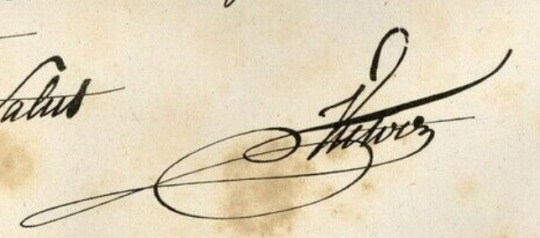
I think I see a V in there. And a treble clef.
Oudinot:

I can kinda make it out!
But anyway I've been saving the best for last.

I have no words for this artistic masterpiece by Marshal Michel Ney.
Is that an umlaut or an emoticon? What are the two lines doing - error of transcription or part of the actual signature? Why do the loops just keep on going????
Is he just self conscious of how short his name is?????
Bonus!
Eugène de Beauharnais how's your-

he just didnt know when to stop.
Junot:

circle! pretty circle! napoleon did say he has pretty handwriting
Duroc:
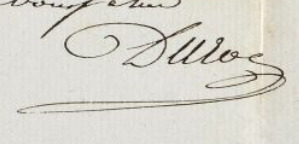
Man he turned that c into an underline
This was fun! Next I'll rate all their coat of arms of something
#cadmus rambles#napoleon's marshals#napoleonic era#napoleon's generals#cad rambles about dead frenchmen on main
133 notes
·
View notes
Text
VOTE FOR A MARSHAL OF THE EMPIRE!!!
SINCE WERE NOT GOING TO APPEAR FOR AGES IN THAT OFFICIAL TOURNAMENT AND THE EMPEROR JUST GOT ROYALLED FUCKED THERE BY A VANISHED ROAST BEEF
HERES A BALLOT JUST FOR US MARSHALS OF THE EMPIRE!!
IN CASE YOU DONT KNOW WHO WE ARE WE'RE THE TOP MILITARY COMMANDERS PROMOTED BY NAPOLEON HIMSELF
AND WE HAVE REALLY BIG HATS
VOTE FOR WHOEEVER THE FUCK YOU WANT WHETHER THATS THE BEST OR THE SEXIEST OR THE MOST PATHETIC I DONT CARE
YOU KNOW YOU WANT TO VOTE FOR ME THOUGH!!!
GO AHEAD AND POST ALL THE PROPAGRANDA YOU WANT, THE ADC WILL SHARE IT IF ITS FUNNY
SORRY TO MONCEY, JOURDAN, BERNADOTTE, BRUNE, MORTIER, KELLERMAN, PERIGNON, SERURIER, VICTOR, MACDONALD, OUDINOT, MARMONT, SUCHET, SAINT-CYR AND GROUCHY, MAYBE WELL HAVE A PITY POLLE LATER
84 notes
·
View notes
Text

Someone (shoutout @mandatorycommunistbrunchhour ) liked my previous marshal height chart, which reminded me: I never made a second one! Here's the second version with all the heights I know (not for my designs specifically but irl). I do also know Marmont's height but I didn't include him because I don't like him <3. If you know anyone else's height or you have seen a different height for any of them, feel free to reblog with that information!
62 notes
·
View notes
Text
—·—·—·—·—·—·—·—·—·—·—·—
🖼️𝑁𝑒𝑦'𝑠 𝑃𝑎𝑖𝑛𝑡𝑒𝑑 𝑃𝑎𝑟𝑎𝑑𝑖𝑠𝑒🖼️
—·—·—·—·—·—·—·—·—·—·—·—
Previously...
🐱Internalised Catgirl Misogyny: ( 1, 2, 3, 4, 5 )
🎨An Interloper in the Gallery
🖼️Ney's Painted Paradise: ( 1, 2, 3, 4 )
—·—·—·—·—·—·—·—·—·—·—·—
"I feel that the only time when he was feeling truly like himself was when he could command. I admired it but… the more I’m thinking about it… ACHOOOO!" — Levavasseur of @le-brave-des-braves
"For the first time... I have come to my complete senses, yet I don't want to push myself." — Marmont of @askgeraudduroc
"Think we're fixing to have trouble. Try to not be the first one to attack." — Murat of @your-dandy-king
"Hm. Let's keep this tour brief now...has anything caught your eye?"— Davout of @perdicinae-observer
"Wait a minute. . . Why is it so quiet? Isn’t it a bit too early for the little ones to be in bed already?" — Napoleon of @alexanderfanboy
—·—·—·—·—·—·—·—·—·—·—·—
As described by @le-brave-des-braves...
The park is large. Probably larger than it should be. There are romantic scenes full of statues and benches. There is a lake with one single boat lazily swinging in the waves. The birds are singing their tributes to the incoming summer.
On the left side, where Levavasseur is heading, there is the Marshal’s tree. The lake is on the right. The water mirrors the surroundings almost perfectly. What might be slightly unnerving is the colour of it - you can’t see the bottom although the water seems clear.
[...]
As the Soult’s party approached the chateau, they might have noticed the cat sitting on the window, wagging its tail nervously. The moment it saw the newcomers, it hissed and disappeared in the window which didn’t appear quite as open as it would make sense.
The chateau’s facade is flawless as if it was painted only yesterday.
The bird song might start to feel eerie to you the moment you realised that the theme is getting mildly repetitive. Also, the shadows are… everywhere? It is hard to describe, but this might be the first time you’ve realised how little attention you pay to the shadows around you. Now it feels like they are pushing into your eyes and your mind and demand to be seen and perceived. It might feel overbearing to some.
—·—·—·—·—·—·—·—·—·—·—·—
To the beautiful surroundings, to the hissing cat, to the singing birds and the deepening shadows, Soult does not react. Oh, he has opinions, he always has opinions, that cat looks very familiar and he'd have a comment about that, the shadows are concerning, everything is too perfect, but he is just a painted veneer right now. But soon that will fade away, and he will be revealed for what he hates.
Soult: This is not a painting. But it is much like one. I can feel time passing, but it will never be time to sleep. The children are irrelevant except to lead us to Ney.
He looks towards the two groups that he ordered to split up, and calls towards them, loudly.
Soult: Return quickly and report what you see!
His teeth... are they growing into grotesque sharpened splinters, like the claws on his hand and his foot? Soon he won't be able to speak.
#rapport d’action du duc de dalmatie#campaign: ney’s painted paradise#your-dandy-king#askgeraudduroc#perdicinae-observer#alexanderfanboy#le-brave-des-braves#long post
23 notes
·
View notes
Text
Napoleon's Marshals and their Birthstones Part 2
This is part 2 of my series where I list all 26 marshal's birthstones, I'll also be adding two non-marshals to the list ;). In this post I'll go over months May through August, the format will be the same as the last post. If you want to review the terms used in the post I'll put the link to the first part here .
--------------------------------------------------------------
Emerald (May)
Marshals- Davout, Kellermann, Massena, Perignon, and Poniatowski
Type: Mineral
Group: Beryl (Be₃Al₂(SiO₃)₆)
Color: Green or bluish-green
Cleavage: Indistinct to none
Fracture: Conchoidal
Mohs Scale: 7.5-8
Luster: Vitreous
Streak: White
Fun Fact: Emerald is one of the four cardinal (most valuable) gemstones, along with diamond, ruby, and sapphire. Its value is due to the limited amount of beryllium (an element in beryl minerals) found in one location on the surface of the Earth, making it rare to find. An even rarer type of emerald is a trapiche emerald, which has the shape of a wheel, with each piece of emerald separated by the inclusion of black shale; the shale becomes less present as time passes. Its green color is due to the presence of chromium or vanadium in its chemical composition. Traces of iron make the color turn into a bluish or yellowish tint.
Pearl (June)
Marshals- N/A (Honorable mention: Joséphine de Beauharnais)
Type: Mineral
Group: Carbonate (CaCo₃)
Color: White, pink, silver, cream, iridescent, blue, gold
Cleavage: None
Fracture: Uneven
Mohs Scale: 2.5-4.5
Luster: Pearly
Streak: White
Fun Facts: Pearls are made either naturally or synthetically. Natural pearls are formed inside the soft tissue of various mollusk species like oysters and mussels when an irritant such as sand gets inside the mollusk. As a defense mechanism, the mollusk covers the object with a substance called nacre, a combination of aragonite and conchiolin. These layers build up over time until they create a pearl. Man-made or cultured pearls are formed when a small piece of a mussel shell is inserted into the mollusk's tissue, causing the mollusk to secrete nacre onto the shell piece. Under a controlled environment, pearls form a perfectly shaped sphere, rather than forming in irregular shapes like organic pearls form.
Ruby (July)
Marshals- Moncey, and Marmont
Type: Mineral
Group: Oxide (Al₂O₃)
Color: Blood red, orange red, pink, or purple red
Cleavage: Indistinct
Fracture: Conchoidal or splintery
Mohs Scale: 9
Luster: Vitreous
Streak: White
Fun Fact: Rubies have the same chemical composition as sapphires, making them the same type of mineral (corundum), the only difference being that rubies are red due to chromium in their crystal lattice, while sapphires are blue, but it does come in different colors [1]. Rubies are not only known for their use in expensive jewelry but also for having major cultural significance ranging from ancient to modern times. In ancient Greece, rubies were thought to preserve mental and physical strength. Many Greek warriors wore talismans with rubies as protection when heading into battles [2].
Peridot (August)
Marshals- Bessières (Honorable mention: Napoleon Bonaparte)
Type: Mineral
Group: Silicate ((Mg,Fe)₂SiO₄)
Color: Green, yellowish-green, olive-green
Cleavage: Poor
Fracture: Conchoidal
Mohs Scale: 6.5-7
Luster: Vitreous or greasy
Streak: Colorless
Fun Fact: Peridot can be dissolved in hydrochloric acid, creating a gelatinous silica form. It was first discovered on the volcanic island of Zabargad in the Red Sea (located near Egypt) 3,500 years ago. The largest known peridot was also discovered in Egypt, weighing approximately 319 carats. The Egyptians were very fond of peridot and believed it to be the gemstone of the sun god Ra, giving it the name the 'evening emerald.' When determining the value of a peridot, its color plays an important role. Peridots with a pure green hue are more desirable than those with a yellowish tint (high iron levels are present). Peridot is also the gemstone with the most inclusions visibly present, which can affect its value, but it is often attributed to it being part of its natural structure.
--------------------------------------------------------------
Sources:
Emerald: King, H. M. (n.d.). Emerald. geology. https://geology.com/gemstones/emerald/
Pearl: MAT, M. (2023, August 26). Pearl: Mineral, gemstone: Properties, formation, occurrence. Geology Science. https://geologyscience.com/minerals/organic-minerals/pearl/?amp
Ruby: [1] King, H. M. (n.d.). Ruby and Sapphire. geology. https://geology.com/gemstones/ruby-and-sapphire/
[2] MAT, M. (2023, April 25). Ruby: Properties, formation, occurrence " Geology science. Geology Science. https://geologyscience.com/gemstone/ruby/?amp
Peridot: MAT, M. (2023, August 29). Peridot : Gemstone, properties, occurrence and uses " geology science. Geology Science. https://geologyscience.com/gemstone/peridot/?amp
#napoleonic era#napoleon bonaparte#french history#napoleon's marshals#rocks and minerals#gemstone#birthstone#napoleonic wars#funny how none of the marshals was born in June#pearl is quit fitting for Josephine xD#peridot too since bessi is known for wearing his green uniform#also pearls are technically not a mineral due to it being organically created#what is considered a mineral is the aragonite in its structure
15 notes
·
View notes
Note
What do you think about Marmont? Would you believe that he is here but as a demon?
I think @le-fils would have been a far better Marshal. Or @le-dieu-mars ! Anyone, really.
I also heard that Marmont is considering a traitor, but this probably happened after my death so I cannot pass judgment yet.
7 notes
·
View notes
Note
First off, I love your work it is great to see that you focus on murat and other historical figures as the complex people that they were. Though these questions are related to his uniforms since I love drawing him so much, first do you happen to know when he started making his own uniforms I’ve heard early as Egypt but can’t find anything. Also, why did he do this and there seems to be so many uniforms he wore do any of them exist today?
Hello! So sorry for the late response, but thank you for your comments on my work, I’m glad you’ve been enjoying it! Regarding Murat’s uniforms, I’ve never found anything that talks about when or exactly why he started doing designing such unique, flamboyant costumes. If I had to guess, I’d say it was once he became a brigadier general in the mid-1790s and would’ve had a little more flexibility and freedom to do this sort of thing than he would’ve as a lower-ranking officer. I vaguely remember seeing something from someone’s memoirs, possibly Marmont’s, mentioning him being attired in a stand-out manner during that time, but I’d have to look for it. As to the why of it, Murat was honestly pretty vain and enjoyed standing out and being noticed, and he was the sort of soldier who relished sticking out like a sore thumb on a battlefield and attracting the enemy’s notice (and fire) in the midst of the chaos. The white plumage that adorned his hat in battle has often been compared to that of Henry IV, and Murat undoubtedly wore it that way because he wanted that comparison.
It doesn’t seem like many of his uniforms survived—there was a ceremonial marshal’s uniform of his that @histoireettralala and I saw at Les Invalides, but even when we visited his childhood home in Labastide-Murat, we were told that they didn’t have any of his actual uniforms on display because the family has what few remain. It wouldn’t be too surprising that so little have survived though. Murat himself had practically none of his possession left when he embarked for his final journey that would end in Pizzo, and Caroline had had to scramble to take what she was able to when the family had to abandon Naples and board a British ship to be taken to Trieste in 1815. She managed to salvage some artwork and some of his weapons and clothing (one biography claims that she had to sell the gold thread from one of his uniforms to be able to get by at one point after his death, which is heartbreaking if true). But yeah, sadly most of his legendary uniforms exist now only in contemporary descriptions and paintings.
15 notes
·
View notes
Photo

While several of his future colleagues were half-orphans or otherwise must have had a rather unhappy childhood, Auguste Frédéric Viesse de Marmont for once comes from a perfect background: only, dearly beloved son of a family of landed gentry. His father Nicolas-Edme had married the daughter of a wealthy Parisian civil servant, the spouses were very much in love with each other and would remain so throughout their lives. Auguste’s older sister died at the age of eight, and his parents doted on their surviving child all the more. His father in particular watched over everything, from Auguste’s first teeth to his education, and during his son's childhood illnesses, his father noted down every little thing in a diary (which still exists): Sweating, meals eaten, hoarseness and breathing and consistency of bowel movements.
Franck Favier in his book on Marmont cites a passage from this journal to show the timetable for young Auguste’s education:
Up at 7 a.m., then his prayers, cleaning his ears, washing his hands and mouth with a sponge, and all this within half an hour.
At half-past seven, practice of his violin.
At eight, breakfast; breakfast taking half an hour.
Recreation until 9 o'clock.
At 9 o'clock, ten verses by heart.
At half-past nine, first lesson in drawing circles and ovals.
At a quarter past ten, recreation until a quarter to eleven.
At a quarter to eleven, reading and hairdressing.
At half past eleven, geometry instruction until noon.
Recreation until half-past twelve and after his lunch until three-quarters past one.
At 2 o'clock, drawing instruction for heads…
(Translated from F. Favier, “Marmont. Le Maudit”)
Starting at the age of nine, there’s also a comprehensive physical training with running, jumping and marching. Papa Marmont hired teachers for his son’s early education before sending him to a collège where Auguste would befriend a rather unruly fellow student named Andoche Junot destined to become a lawyer, but already dreaming of soldiering and the glory of arms. A dream young Auguste soon shared. A little grumbling (he surely had not groomed this perfect son to see his talents wasted in the army!) Papa Marmont gave in to his son’s wishes, under the condition that Junior would join the artillery, where he at least had to use his head and even might learn a thing or two that would later prove useful outside the army, in real life… This new career path in the end led Marmont to meeting a certain Napoleon Bonaparte, in Dijon 1791.
Let’s fast-forward a little: Robespierre’s fall, Bonaparte imprisoned, Marmont and Junot planning to free him, Bonaparte in semi-disgrace, Papa Marmont feeding the trio, then 13 Vendémière, Marmont becoming aide-de-camp to general Bonaparte, following him to Italy…
It’s in autumn 1796 when Marmont, in triumph, brings to Paris some flags taken from the enemy. To mark the occasion, the ultra-rich Swiss banker Perrégaux gives a ball in his Paris residence, with the dashing young war hero at the centre of attention. Perrégaux’s daughter Hortense immediately falls in love. Hard.

Hortense (born in 1779) was yet another disciple of Madame Campan’s famous institute of future imperial brides, and a good friend of the other Hortense, Hortense de Berauharnais. (Call me biased all you want but there is a pattern there.) She was also intelligent, witty, strong-willed and her father's spoilt favourite. She proved this strength of will to her father, when the latter began to look for a husband for his daughter over the next few months (a husband who was not called "Marmont", obviously, because a simple soldier was not an appropriate match). Hortense however refused to even look at the candidates. In April 1797, she went so far as to lock herself up in her room for days … and of course she got her way in the end. By May 1797, Papa Perrégaux promised her she could have that nobody of a soldier if she insisted.
Marmont, as to him, had long returned to Italy and was blissfully unaware of the storm he had caused in one of the first families of Paris. As a matter of fact, in that same May 1797 Bonaparte gave him a furious telling-off, for Marmont had returned to headquarters twenty-four hours late. Twenty-four hours that he had apparently spent in the arms of some Venetian beauty. (In his memoirs Marmont claims that Napoleon in July of that year wanted to marry him to his sister Pauline, which seems to be an obvious lie as by the time Marmont claims the proposal was made, Pauline was already engaged to Leclerc.)
It’s only in April 1798 when Marmont and Mlle Perrégaux finally tie the knot. Of course, for Marmont these new family relations are a dream come true. His young wife brings him a million in dowry. Both spouses have beauty, wit and intelligence and are adored by tout Paris.
Difficulties start as soon as the young couple visits Marmont’s family estate in Châtillon-sur-Seine. Living in the province, with only a couple of old-fashioned landed gentry for company, clearly is not to Hortense’s likings. Particularly, as Marmont soon leaves her alone in this hillbilly family circle, in order to follow Napoleon to Egypt. Soon enough, Hortense returns to Paris and lives with her father again.
That’s where Marmont will find her on his return from Egypt, and for some time, all seems fine again (despite Papa and Maman Marmont being decidedly unhappy with that spoilt brat of a daughter-in-law). The couple moves into a house of their own, Marmont starts to show first signs of vanity and shows of his wealth in the style of a true nouveau riche, even somewhat alienating himself from his parents. Hortense, as to her, is often invited to Malmaison, much to Marmont’s chagrin – the new court forming there to him seems a bit too permissive in terms of morals. As a matter of fact, he even suspects the First Consul of having set his eyes on Madame Marmont!
Let’s fast-forward again as things start to turn ugly rather quickly in Marmont’s marriage: He has always been a favourite with the ladies, sees no reason to stop that, and his wife, not used to giving up on any of her whims, will soon start to have affairs of her own. Marmont suspects her of having affairs with Napoleon and with her father’s partner Laffitte.
On 10 December 1807, while Marmont is in Dalmatia, a boy named Jacques Alfred Valberg is born in Paris. Eight months later, an ADC of Marmont’s recognises him as his son, the mother in the papers being named as Marie Perdraux, living in rue de Hazard. - Considering that this boy will be the sole heir of Hortense Perregaux-Marmont’s fortune in 1857, certain suspicions may be allowed…
By the time Marmont receives his marshal’s baton, his marriage is long in shambles. And yet they can’t divorce, they are kept together by – money. Both have grown fond of luxury, both love to overspend, and Marmont’s family relations to the banker’s family are necessary for him to keeo up his life style. He has shares in many of his father-in-law’s business projects.
It’s only during the Restauration, when he has become the infamous »Duc de Raguse« that he will officially separate from his wife (but not divorce). She will live a couple of years longer than him, and it would be interesting to hear her thoughts on her husband’s famous memoirs. He does not treat her kindly in them.
55 notes
·
View notes